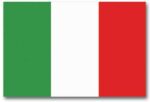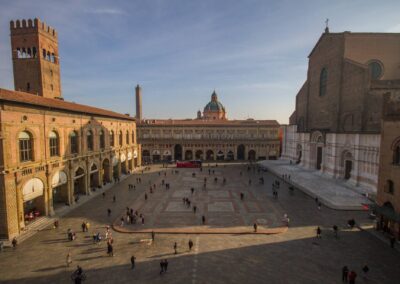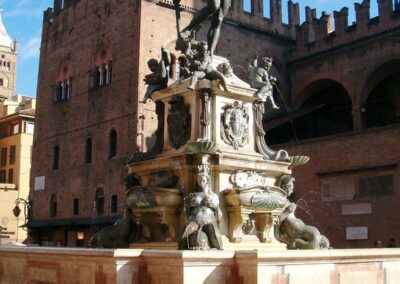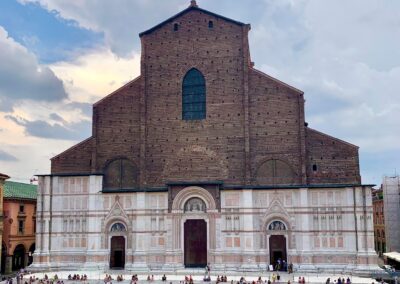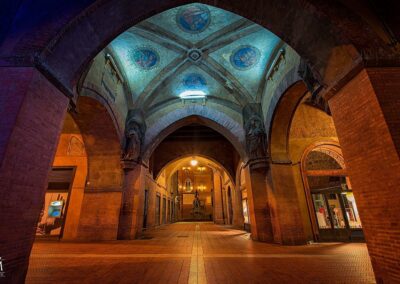Piazza Maggiore and Basilica di San Petronio
The Fountain of Neptune, Palazzo d’Accursio, Palazzo Re Enzo, Palazzo del Podestà, Palazzo dei Banchi, Palazzo dei Notai, and of course the Basilica of San Petronio: in the heart of Bologna, two squares (Piazza Maggiore and Piazza del Nettuno) contain many of the city’s historical and artistic treasures within the space of a few meters.
The imposing Fountain of Neptune is impossible to miss. Standing in the square of the same name, it was made of marble and bronze by the Flemish sculptor Giambologna in the second half of the 16th century. Next to it stands Palazzo Re Enzo, which dates back to the 13th century and takes its name from King Enzo of Sardinia who spent over 20 years of imprisonment there. Palazzo del Podestà was also built in the same century for public functions. One of the most interesting features of this last building is the Voltone del Podestà. Before setting off, try a game of “telephone” with the special acoustics of the vault. Simply choose one of the four corners of the Voltone and send a friend to the opposite corner. Speak normally into your corner, with your backs to each other, and your voice will bounce diagonally across the arch to reach your friend, loud and clear.
On the other side of the square stands Palazzo d’Accursio, the city hall, while Piazza Maggiore is bordered by Palazzo dei Banchi (built in the 16th century to hide the market that stood behind it) and Palazzo dei Notai, the ancient headquarters of the Notary Association. And finally, the Basilica of San Petronio. It was born as the city’s civic temple, a church established by the people of Bologna in honor of Saint Petronius (their patron saint), and has maintained that role to this day. The history of the Basilica of San Petronio begins in 1390 when the first stone was laid. It was originally intended to be the largest in the world, even surpassing the St. Peter’s that stood in Rome at that time. However, the project was cut short and we can only glimpse what was planned thanks to the partial façade of San Petronio, which remains incomplete. Inside, the Basilica contains 22 chapels (eleven on each side). Among these, the second on the left houses the relics of Saint Petronius, the fourth (the Bolognini chapel) hosts a splendid cycle of frescoes by Giovanni da Modena, and the seventh preserves the body of Elisa Bonaparte, Napoleon’s sister.
Many record-setting features are held by this church. Shortly after entering, you can admire the longest Meridian Line in the world, installed along the left nave in the 17th century by Gian Domenico Cassini. Furthermore, the presbytery houses the world’s oldest monumental organ with independent registers. The instrument was built between 1471 and 1475 by Lorenzo di Giacomo da Prato. It is still in working order, with ten independent registers (almost double the usual number), making it a “unique” example of its kind.
TRAIL
About 50 km, from Piazza Maggiore in Bologna to the Rocca in Bazzano, surrounded by stunning nature and numerous historical-artistic sites to admire and rediscover throughout the hike.
TOP ATTRACTIONS
Discover all the interesting sites, cultural or otherwise, that you can find and visit along the way

